Contemporary art Leningrad School


Victor Ashotovich Abramyan (Russian: Виктор Ашотович Абрамян) was a Soviet and Russian artist of the second half of the twentieth and early twenty-first centuries. He is known as a painter, a representative of the Leningrad school.
Victor Abramyan created portraits, landscapes, still lifes and genre paintings. He participated in exhibitions from the early 1970s in Leningrad. Among his famous works are "Blockade everyday life", "Still Life with a Centennial", "Leningrad. 1942. Women on Guard in the besieged city", "Young Guests" and others.
Abramyan's works are in museums and private collections in Russia and many other countries.


Taisia Kirillovna Afonina (Russian: Таисия Кирилловна Афонина) was a Soviet artist of the second half of the twentieth century. She is known as a painter, graphic artist, representative of the Leningrad school.
Taisia Afonina participated in exhibitions since 1940, creating portraits, landscapes, genre compositions, still lifes and etudes. At the beginning of her career she was interested in military subjects, and then delved into the genre of portraiture and lyrical landscape. Her style is characterized by tonal painting, the rendering of light and air environments and subtle coloristic combinations. In the 1980s she preferred the watercolor technique, painting flowers such as roses, daisies and tulips. Her works are in museums and private collections in Russia and other countries.


Pyotr Filippovich Alberti (Russian: Пётр Филиппович Альберти) was a Soviet and Russian artist of the second half of the twentieth century. He is known as a painter, a representative of the Leningrad school.
Pyotr Alberti created portraits, landscapes, genre paintings. He actively exhibited since 1951 in Leningrad, demonstrating his works along with the masters of his time. The artist had a broad writing and bright coloring, expressive stroke and used various techniques. He paid special attention to the study of nature. In the late period of his career, he became fond of still life paintings with favorite motifs such as peonies and watermelons.
Alberti's works are preserved in museums and collections around the world.


Vladislav Leopoldovich Anisovich (Russian: Владислав Леопольдович Анисович) was a Soviet artist of the mid-twentieth century. He is known as a painter, graphic artist and teacher, a representative of the Leningrad school of painting.
Vladislav Anisovich participated in various exhibitions since 1935. His work included portraits, historical and genre compositions, as well as landscapes. Among the famous paintings of the artist are "The passage of K. Voroshilov's detachment from Lugansk to Tsaritsyn", "Assault on Perekop" and others. The master taught at the Leningrad Institute of Painting, Sculpture and Architecture.
His works are in various museums and private collections in many countries, including the State Russian Museum.


Evgenia Petrovna Antipova (Russian: Евгения Петровна Антипова) was a notable Russian painter, graphic artist, and art teacher. She stood out for her genre compositions, portraits, landscapes, and still lifes, primarily utilizing oils and watercolors. Evgenia Antipova's works often depicted apple orchards and Crimean landscapes, showcasing her profound connection to nature and her ability to capture its essence.
Evgenia Antipova's education at the prestigious Repin Institute of Arts shaped her artistic journey, leading to a career enriched with personal exhibitions and a significant presence in the art community. Not only did her artworks gain recognition in Russia, but they also found their way into international collections and exhibitions, notably in France, Germany, the United States, and the United Kingdom.
Throughout her career,Evgenia Antipova was an active participant in various significant exhibitions, displaying her works alongside other renowned artists. Her contributions to the art world were recognized with personal exhibitions in Saint Petersburg and inclusion in art auctions and exhibitions abroad.
Evgenia Antipova's paintings are part of prestigious collections, including the State Russian Museum, and continue to be celebrated in art museums and private collections globally. Her legacy as a prominent figure in the Leningrad School of painting endures, captivating art enthusiasts and collectors with her vivid and emotionally resonant works.
For those interested in Russian art, particularly the Leningrad School of painting, Evgenia Petrovna Antipova's oeuvre offers a rich exploration of genre compositions and landscapes, reflecting the artistic vibrancy of her era. Collectors and art experts are encouraged to delve into her works and consider signing up for updates on exhibitions and sales featuring her paintings.


Irina Mikhailovna Baldina (Russian: Ирина Михайловна Балдина) was a Soviet and Russian artist of the second half of the twentieth and early twenty-first centuries. She is known as a painter, a representative of the Leningrad school.
Irina Baldina participated in exhibitions in Leningrad since 1952. Her work covered a variety of genres, including portraits, landscapes, still lifes and genre compositions. From 1960 to 1980, her works were characterized by themes of modernity, nature and people of Zaonezhye. Her style was characterized by broad brushstrokes, decorative and mastery in conveying the colors of northern nature.
Her works are in museums and private collections all over the world, including Russia, France, USA, Japan and other countries.


Victoria Markovna Belakovskaya (Russian: Виктория Марковна Белаковская) was a Russian Soviet artist of the mid-twentieth century. She is known as a painter, graphic artist and representative of the Leningrad school of painting.
Victoria Belakovskaya participated in exhibitions of Leningrad artists since the early 1930s. Her work covers various genres, including portraits, genre compositions, still lifes and landscapes. Her famous works include "Pioneer Girl" (1931), "Self-Portrait with a Cigarette" (1936), "Leningrad Landscape" (1953), "Spring Flowers. Still Life" (1961), a series of landscapes of Altai, Crimea, Kiev and others.
Works by the artist are in the collections of museums in Russia, Great Britain, USA, France and other countries.
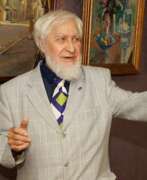

Yuri Vladimirovich Belov (Russian: Юрий Владимирович Белов) was a Soviet and Russian artist of the second half of the twentieth and early twenty-first centuries. He is known as a painter, a representative of the Leningrad school, who worked in the genres of portrait, landscape, still life and historical painting.
Yuri Belov actively participated in exhibitions since 1954. In 1960-1980 the main theme of his work was the images of Lenin and the history of the revolutionary movement. The artist's manner evolved from strict objectivism to a more decorative and impressionistic style.
The master's works are in museums in Russia, France, the USA, Germany and other countries, as well as in private collections.
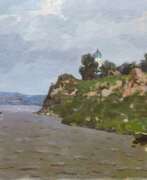

Yakov Tarasovich Besperstov (Russian: Яков Тарасович Бесперстов) was a Russian Soviet artist of the second half of the twentieth century. He is known as a painter, muralist, representative of the Leningrad school of painting.
At the initial stage of his career, Yakov Besperstov worked in the field of monumental and decorative painting, participating in the painting of various buildings. Later he moved to easel painting, creating portraits, genre paintings, as well as urban landscapes. His works were exhibited at exhibitions from the late 1950s and were appreciated by leading artists of Leningrad. The master traveled extensively throughout various regions of Russia and other countries, including France.
His works are in museums and private collections in various countries, including Russia, France, Belgium, Germany, Spain and Italy.


Georgy Nikolaevich Bibikov (Russian: Георгий Николаевич Бибиков) was a Russian and Soviet artist of the mid-20th century. He is known as a painter, graphic artist, illustrator, muralist and theater artist of the Leningrad school, working in the genres of landscape, portrait, still life and thematic painting.
Georgy Bibikov began participating in art exhibitions in 1920. Among his famous works are "Loaders", "Young Red Fleets Receive Uniforms", "Greetings to the Winners", "Trench Truth" and others. His works are in the State Russian Museum and in museums and private collections in Russia, Ukraine, Germany and France.


Olga Borisovna Bogayevskaya (Russian: Ольга Борисовна Богаевская) was a Soviet and Russian artist of the second half of the twentieth century. She is known as a painter, graphic artist, teacher, and representative of the Leningrad school.
At the beginning of her career, Olga Bogayevskaya taught painting at the Secondary Art School of the Leningrad Institute of Painting, Sculpture and Architecture and participated in exhibitions. Her works, notable for their uncommon colorism, included children's portraits, interior and exterior still lifes. In 1950-1960 she was already considered one of the leading artists of Leningrad.
Her works are in many museums and private collections around the world, including the State Russian Museum and the State Tretyakov Gallery. Bogayevskaya also exhibited successfully abroad, including France.
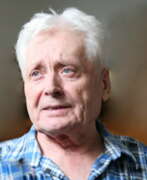

Vasily Pavlovich Borisenkov (Russian: Василий Павлович Борисенков) was a Soviet and Russian artist of the second half of the twentieth and early twenty-first centuries. He is known as a painter and teacher, a representative of the Leningrad school of painting.
Vasily Borisenkov actively participated in Leningrad art exhibitions since 1954, was the author of genre and battle paintings, landscapes and portraits. Among his famous works are the paintings "Difficult Conversation", "Spring", "Strelna. The Beginning of Summer" and many others. The master's works are in museums and private collections both in Russia and abroad.


Piotr Dmitrievich Buchkin (Russian: Пётр Дмитриевич Бучкин) was a multifaceted Soviet and Russian artist known for his contributions to painting, graphic arts, and teaching. Educated at the Higher Art School at the Imperial Academy of Fine Arts under Vasiliy Mate and Vasily Savinsky, Piotr Buchkin graduated in 1912, embarking on a journey that included travels across Europe to refine his artistry. His works span a variety of genres, including portraits, genre paintings, landscapes, and illustrations, showcasing his versatility across different mediums such as watercolor, pencil, pastels, etchings, oil, and tempera paintings.
Piotr Buchkin's engagement with the art world was profound; he was a founding member of the Leningrad Union of Artists and contributed significantly to the Leningrad School of Painting. Throughout his career, Buchkin participated in numerous exhibitions and was recognized for his talent as a graphic artist and portraitist, adept in various painting techniques. His memoirs, "About that in memory: Notes of an Artist," provide insights into his artistic journey and experiences.
Piotr Dmitrievich Buchkin's works are held in prestigious collections, including the State Russian Museum and the State Tretyakov Gallery, reflecting his esteemed position in the art community. His legacy continues to inspire, as his works are found not only in Russia but also in private collections and museums worldwide.
For collectors and experts in art and antiques, Piotr Buchkin's oeuvre offers a deep dive into the richness of Soviet and Russian art, particularly the Leningrad School. To stay updated on exhibitions, sales, or auctions featuring Buchkin's works, consider subscribing to relevant updates.


Zlata Nikolaevna Byzova (Russian: Злата Николаевна Бызова) was a Soviet and Russian artist of the second half of the twentieth and early twenty-first centuries. She is known as a painter, a representative of the Leningrad school, famous for her genre compositions, portraits, landscapes and studies from life.
Zlata Byzova achieved particular success in provincial portrait-types and Old Ladoga sketches of the 1960s-1970s. Her works were successfully presented at exhibitions and auctions of Russian painting in France in 1989-1992.
The artist's works are in museums and private collections in Russia, Finland, Germany, France and other countries.


Ilya Sergeyevich Glazunov (Russian: Илья́ Серге́евич Глазуно́в) was a distinguished Soviet and Russian artist, born on June 10, 1930, in Leningrad, and passing away on July 9, 2017, in Moscow. Glazunov was not just a painter; he was a visionary and an educator who founded the Russian Academy of Painting, Sculpture, and Architecture in Moscow, where he also served as rector until his death. Glazunov's artistry was deeply rooted in historical and religious themes, as seen in masterpieces like Russia the Eternal, The 20th Century Mystery, and The Ruining of the Temple on Easter Night, along with his celebrated illustrations for Fyodor Dostoyevsky's works.
Glazunov's contribution to Russian art and culture was immense. He was a full cavalier of the Order "For Merit to the Fatherland," among other honors, acknowledging his significant role in the national art scene and education. Notably, during the 1970s, Glazunov played a key role in saving parts of Moscow's historic center from destruction due to proposed restoration plans, showcasing his commitment not only to the arts but also to preserving Russia's cultural heritage.
Collectors and experts in art and antiques admire Glazunov for his unique blend of artistic brilliance and dedication to cultural preservation. His works, which are held in high esteem across the globe, are a testament to his skill, vision, and unwavering love for his homeland. For those intrigued by Glazunov's legacy and wishing to explore his works further, subscribing for updates on new sales and auction events related to Ilya Sergeyevich Glazunov is highly recommended. This subscription is an invaluable resource for staying informed about opportunities to own a piece of Russian art history.


Yakov Andreevich Golubev (Russian: Яков Андреевич Голубев) was a Soviet artist of the mid-twentieth century. He is known as a painter, a representative of the Leningrad art school.
Yakov Golubev began participating in exhibitions while still studying at the painting faculty of the Leningrad Institute of Painting, Sculpture and Architecture. He became famous for his lyrical landscapes. Among his famous works are the paintings "Quiet Day", "Wicket Gate", "Late Autumn" and others.
The master's works are in museums and private collections all over the world, including Russia, Japan, Italy, Germany and France.


Abram Borisovich Grushko (Russian: Абрам Борисович Грушко) was a Soviet artist of the mid-twentieth century. He is known as a painter and teacher, a representative of the Leningrad art school.
Abram Grushko specialized in landscapes and genre compositions, with a special emphasis on Zaonezhye and its inhabitants. In his art he moved from the traditional plein air to decorative and graphic techniques, close to the "severe style", with characteristic clarity of silhouettes and rich colors. The master also taught at the Leningrad Higher Art-Industrial School.
His works can be found in museums and private collections all over the world, including Russia, Great Britain, Germany, France, Israel and other countries.


Maya Kuzminichna Kopitseva (Russian: Майя Кузьминична Копытцева) was a Soviet and Russian artist of the second half of the twentieth and early twenty-first centuries. She is known as a painter, a master of still life, landscape, portrait and genre composition, a representative of the Leningrad school of painting.
Maya Kopitseva gained recognition in part due to her fine sense of color and ability to convey beauty and poetry in ordinary objects and phenomena. Her painting evolved from capturing immediate impressions to a more figurative interpretation of the material world.
In the late 1980s and early 1990s her works were successfully presented at exhibitions and auctions of Russian painting L' Ecole de Leningrad in France.


Pyotr Gurievich Korostelyov (Russian: Пётр Гурьевич Коростелёв) was a Soviet and Russian artist of the second half of the twentieth and early twenty-first centuries. He is known as a painter, a representative of the Leningrad school.
Pyotr Korostelyov participated in the Great Patriotic War, after demobilization he graduated from the Leningrad Art and Graphic School and taught art, continuing to be actively engaged in creative work. His works cover a variety of genres, including portraits, genre compositions, still lifes and landscapes. For his contribution to art he was awarded the honorary titles "Honored Artist of the Russian Federation" and "People's Artist of the Russian Federation". The master's works are in various museums and private collections in Russia and abroad.


Alexander Petrovich Koroviakov (Russian: Александр Петрович Коровяков) was a Soviet and Russian artist of the second half of the twentieth century. He is known as a painter, a representative of the Leningrad school.
Alexander Koroviakov worked in the genres of portraiture, landscape, genre compositions and still life. His artistic vision was emphasized on the Leningrad landscape and writing from nature. The master experimented with various painting techniques to create works with a volumetric and multi-layered effect.
His works are in museums and private collections in Russia, England, Belgium, USA, France and other countries.


Gevork Vartanovich Kotyants (Russian: Геворк Вартанович Котьянц) was a Soviet and Russian artist of the second half of the twentieth century of Armenian origin. He is known as a painter, a representative of the Leningrad school.
Gevork Kotyants began his artistic career in 1948. His works cover various genres, including portraits, still lifes, landscapes and narrative compositions. The mid-1950s are marked by his particular devotion to decorative still life, in the work of which the master developed his own artistic style. He also created a small number of genre compositions and portraits, often using his family as models. In the 1990s, his works were successfully demonstrated at exhibitions and auctions of Russian painting in various countries, where they found their admirers.


Yaroslav Igorevich Krestovsky (Russian: Ярослав Игоревич Крестовский) was a Soviet and Russian artist of the second half of the twentieth and early twenty-first centuries. He is known as a painter and graphic artist, a representative of the Leningrad School.
Yaroslav Krestovsky has participated in exhibitions since 1957. His works, including urban and natural landscapes, still lifes, portraits and genre compositions, became famous for their decorative color and graphic expressiveness. Especially famous are a series of still lifes, genre compositions and images of "Leningrad courtyards", in which he conveyed the atmosphere of contemporary reality and its contradictions. The master was a member of the leftist group of artists known as "Eleven".


Boris Mikhailovich Lavrenko (Russian: Борис Михайлович Лавренко) was a Soviet and Russian artist of the second half of the twentieth and early twenty-first centuries. He is known as a painter and teacher, a representative of the Leningrad school.
Boris Lavrenko participated in exhibitions since 1936, specialized in portraits, genre and thematic paintings, landscapes and still lifes. His artistic style is characterized by broad writing and bright brushstrokes, as well as the ability to convey light and volumetric effects. In the 1970s and 1980s his works became more decorative and generalized in form. Lavrenko's works are in many museums and private collections around the world.


Gavriil Kondratyevich Malysh (Russian: Гавриил Кондратьевич Малыш) was a Soviet and Russian artist of the second half of the twentieth century. He is known as a painter and watercolorist, a representative of the Leningrad school.
Gavriil Malysh worked mainly in the genres of landscape, still life and genre compositions. He became famous as a bright watercolorist, a master of lyrical landscape and decorative still life. His works are distinguished by a color palette dominated by blue, lilac and violet tonalities. His works are in numerous museums and private collections in Russia and other countries, including France, USA, Japan and Italy.


Lidia Alexandrovna Milova (Russian: Лидия Александровна Милова) was a Soviet and Russian artist of the second half of the twentieth and early twenty-first centuries. She is known as a painter and graphic artist, a representative of the Leningrad school.
Since 1957, Lidia Milova actively participated in exhibitions, creating landscapes, still lifes, portraits and genre paintings. Her painting is characterized by bright and saturated colors, and she herself actively used corpus writing and separate stroke to create form and structure on the canvas. Her artistic skill was particularly pronounced in decorative still life.
Milova's works are in museums and private collections in various countries, including Russia, Germany, Spain, Finland, the PRC, Japan, the UK, France and the USA.


Georgy Moiseevich Moroz (Russian: Георгий Моисеевич Мороз) was a Soviet and Russian artist of the second half of the twentieth and early twenty-first centuries. He is known as a painter, a representative of the Leningrad school, whose work included landscapes, still lifes, genre compositions and portraits.
Georgy Moroz, having started participating in exhibitions since 1963, traveled extensively throughout the USSR and foreign countries, including Italy, the USA and Japan. His works are in museums and private collections in Russia, Japan, Italy, Germany, Holland, France, Sweden, USA and other countries.


Andrei Andreevich Mylnikov (Russian: Андре́й Андре́евич Мы́льников) was a Russian painter and educator, celebrated for his contributions to Soviet and Russian art. Born in Pokrovsk in 1919, Mylnikov's artistic journey led him to study and later teach at the prestigious Ilya Repin Institute of Painting, Sculpture and Architecture, embodying the spirit of Soviet artistry through his work and mentorship.
Mylnikov's art spans a range of genres, from portraits and landscapes to monumental art. His portraits, such as those of his wife, resonate with harmony and lyricism, drawing comparisons to the Russian Impressionist tradition. Landscapes, like "Summer" (1969) and "Venice" (1964), showcase his ability to blend realism with the symbolic, marked by a fresh palette and pure color. Noteworthy among his creations is the "Farewell" (1975), a painting that captures the emotional gravity of the Soviet people's wartime experiences, and the "Spanish Triptych," which reflects on themes of life, death, and the human spirit, earning him the Lenin Prize.
Mylnikov's works are held in high esteem, finding places in Russia's most prestigious museums and galleries, as well as international collections. His influence extends beyond his canvases, through his significant role in educating future artists and shaping the course of Soviet and Russian art.
For collectors and art enthusiasts, Mylnikov's oeuvre offers a profound glimpse into the soul of Russian art, blending technical mastery with deep emotional and philosophical exploration. His legacy continues to inspire admiration and respect among art lovers around the world.
To stay informed on exhibitions and sales of Andrei Andreevich Mylnikov's works, signing up for updates is highly recommended. This will ensure you're alerted to new opportunities to appreciate or acquire pieces by this remarkable artist, directly related to the primary keyword of interest.


Sergei Ivanovich Osipov (Russian: Сергей Иванович Осипов) was a Soviet artist of the second half of the twentieth century. He is known as a painter and teacher, a representative of the Leningrad school of painting.
According to critics, Sergei Osipov reached the peak of his creativity in the 1970s and early 1980s, when he created a number of outstanding works in the genres of landscape and still life. His favorite subject was nature and views of old Russian towns in his native Tver land. His paintings are characterized by laconism, conventionality of forms, and expressiveness of images, which is reminiscent of the art of Old Russian masters. His works left a significant trace in Leningrad painting of the 1970s and gave it an identity.
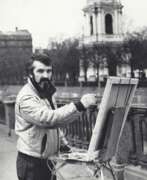

Gennady Lvovich Rogozny (Russian: Геннадий Львович Рогозный) was a Soviet and Russian artist of the last third of the twentieth and early twenty-first centuries. He is known as a painter and graphic artist, a representative of the Leningrad school.
Gennady Rogozny specialized mainly in still lifes and landscapes of Russia. He skillfully captured provincial Russian towns, secluded villages and the image of St. Petersburg with special expression and color harmony. His works are expressive, deeply spiritual and poetic. The artist actively participated in exhibitions and presented his works at auctions in different cities of the world.
His works are in various museums and private collections both in Russia and abroad, including the collection of the Royal Swedish Family.


Kapitolina Alexeevna Rumiantseva (Russian: Капитолина Алексеевна Румянцева) was a Soviet and Russian artist of the second half of the twentieth and early twenty-first centuries. She is known as a painter, a representative of the Leningrad school of painting, who worked in the genres of still life, landscape and genre composition.
Kapitolina Rumiantseva began exhibiting her works in 1970 and became best known for her still lifes with flowers and fruit. Her style was characterized by decorative and bright colors, while maintaining an interest in the subject and its texture. Her works were always imbued with lyricism and poetry.
Her works are in museums and private collections all over the world, including Russia, France, USA, Norway, Belgium, Italy and other countries.


Alexander Mikhailovich Semyonov (Russian: Александр Михайлович Семёнов) was a Soviet artist of the second half of the twentieth century. He is known as a landscape painter, a representative of the Leningrad school of painting.
Even at the beginning of his career Alexander Semyonov chose the main direction of his work: urban landscapes of Leningrad - streets, bridges, embankments. He mastered the plein air, creating nature studies and paintings with bright colors and precise color harmony. His artistic style was formed by the mid-1960s, distinguished by freshness, immediacy and the art of conveying the first impression of cityscapes.


Boris Ivanovich Shamanov (Russian: Борис Иванович Шаманов) was a Soviet and Russian artist of the second half of the twentieth and early twenty-first centuries. He is known as a painter, graphic artist and teacher, a representative of the Leningrad school of painting.
Boris Shamanov showed himself as a master of portraits, landscapes and genre compositions. His work is characterized by a variety of techniques, including watercolor, gouache, oil and tempera. The main theme of his works are poetic images of the Russian countryside. The artist skillfully combined still lifes with landscapes, as well as portraits with landscape elements. His style changed from semi-cubism in the 1960s to a more plein air approach with associative elements.
Shamanov was a member of the left-wing group Eleven. His works are in many major museums and private collections in Russia and other countries.


Dmitry Alexandrovich Shuvalov (Russian: Дмитрий Александрович Шувалов) was a Soviet artist of the second half of the twentieth and early twenty-first centuries. He is known as a watercolorist, a representative of the Leningrad school of painting.
Dmitry Shuvalov specialized in landscape, still life and portrait painting, applying the original method of watercolor. In his teaching activities, he actively taught students his unique method, demonstrating the importance of taking into account light and air characteristics when working with wet paper.
His works have been presented at numerous exhibitions both in Russia and abroad, and they are in the collections of various countries.


Elena Petrovna Skuin (Russian: Елена Петровна Скуинь) was a Soviet artist of the second half of the twentieth century. She is known as a painter, graphic artist, draftsman and teacher, a representative of the Leningrad school.
Elena Skuin wrote genre paintings, portraits, still lifes and landscapes. She worked in a variety of techniques including oil painting, watercolor and charcoal drawing. Her greatest successes were still lifes, and in the 1970s she came to be regarded as an outstanding watercolorist.
Her works reflected the beauty and aesthetics of everyday objects, giving them a soulful warmth.


Vasily Vasilievich Sokolov (Russian: Василий Васильевич Соколов) was a Soviet and Russian artist of the second half of the twentieth and early twenty-first centuries. He is known as a painter and teacher, a representative of the Leningrad school of painting.
Vasily Sokolov worked in portrait, landscape, domestic and historical genres. Among his most famous historical paintings is "Stalin and Voroshilov on the Tsaritsyn front in 1918". Throughout his career, the artist combined creativity with pedagogical and public activities. He was twice elected chairman of the Leningrad Union of Soviet Artists.
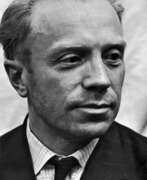

Victor Kuzmich Teterin (Russian: Виктор Кузьмич Тетерин) was a Soviet artist of the second half of the twentieth century. He is known as a painter and graphic artist, a representative of the Leningrad school.
Victor Teterin became famous for his urban landscapes, still lifes and genre compositions. At the beginning of his career he meticulously reproduced realistic forms and everyday life in Leningrad, but later focused on the exploration of color and bright colors, especially after trips to the Crimea. In 1966 his style became decorative, light and free in expression, with color and rhythm becoming key elements.
Teterin's works are in numerous museums and private collections around the world, including Russia, France, Italy, the UK and Germany.


Boris Sergeevich Ugarov (Russian: Бори́с Серге́евич Уга́ров) was a distinguished Russian Soviet realist painter and art educator, whose contributions to the Leningrad school of painting marked him as one of its most illustrious representatives. Born on February 6, 1922, and passing away on August 2, 1991, Ugarov's life and work were deeply intertwined with the cultural and artistic developments of his time, earning him the status of an Honored Artist of the RSFSR. His paintings, celebrated for their depth and realism, captured the essence of Soviet life and ideology, reflecting the socio-political atmosphere of the era.
Ugarov's career was distinguished not only by his artistic talent but also by his dedication to art education, influencing generations of artists as a professor and rector at the prestigious Academy of Arts. His contributions to the Russian and Soviet art scenes were recognized with numerous awards, including the State Prize of the USSR, illustrating his impact on and legacy within the realm of Soviet art. Ugarov's works, which are held in high regard both nationally and internationally, can be found in museums and private collections, serving as a testament to his skill and dedication to realism.
For collectors and experts in art and antiques, the works of Boris Ugarov offer a unique glimpse into the Soviet era, characterized by meticulous attention to detail and a profound understanding of the human condition. His legacy continues to inspire and influence, underscoring the importance of realism in conveying cultural and historical narratives. For those interested in exploring the rich tapestry of Russian Soviet art, Ugarov's work remains a pivotal point of reference.
To stay updated on new product sales and auction events related to Boris Sergeevich Ugarov, sign up for updates. This subscription ensures you remain informed about opportunities to acquire pieces by this master of Soviet realism, bringing the depth and beauty of his work into your collection.
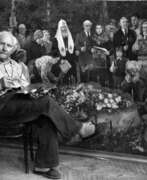

Nikolay Nikolayevich Volodimirov (Russian: Николай Николаевич Володимиров) was a Soviet and Russian artist of the second half of the twentieth century. He is known as a painter and teacher, a representative of the Leningrad art school.
Nikolay Volodimirov actively participated in art exhibitions since 1940. His work included genre and historical compositions, portraits and landscapes. Among his famous works are "The crossing in Nevskaya Dubrovka", "The feat of 28 heroes-Panfilovtsy" and others. The artist's works are in museums and private collections around the world, including Russia, Great Britain, the USA, France and Finland.


Rostislav Ivanovich Vovkushevsky (Russian: Ростислав Иванович Вовкушевский) was a Soviet and Russian artist of the second half of the twentieth century. He is known as a painter, muralist and teacher, a representative of the Leningrad school.
Rostislav Vovkushevsky actively exhibited his works since 1949. He worked in both easel and monumental painting, his work included still lifes, portraits, landscapes and genre compositions. Important works of the artist were monumental panels, mosaic compositions and ceremonial curtains for auditoriums. His style was distinguished by decorative elements, clear silhouettes and rich color, as well as rhythmic organization of the canvas.
His works are in museums and private collections around the world.


Vecheslav Frantsevich Zagonek (Russian: Вячесла́в Фра́нцевич Заго́нек) was a distinguished Soviet painter, celebrated as a People's Artist of the USSR and a luminous figure within the Leningrad school of painting. Born on December 19, 1919, in Irkutsk, East Siberia, Zagonek's journey into the arts took him to Leningrad, where he honed his skills at the prestigious Secondary Art School under the All-Russian Academy of Art and later at the Repin Institute. His art, known for its lyrical landscapes and evocative genre paintings, carried the essence of his homeland's beauty and its people's spirit. Zagonek's contributions to art were recognized with his membership in the Academy of Arts of the USSR, and his works are held in high esteem, displayed in prominent Russian museums like the State Russian Museum and the State Tretyakov Gallery, as well as in international collections.
Throughout his career, Zagonek exhibited a profound ability to capture the Russian landscape and everyday life, rendering them with a depth of feeling and a nuanced palette that spoke to the soul of the viewer. His works from various periods, including notable pieces like "Girl with a horse" and "Village Vella. Snowdrift," have been highly valued at auctions, reflecting the enduring appeal and significance of his art.
Zagonek's legacy extends beyond the borders of Russia, with his paintings residing in museum collections worldwide, underscoring his role as a key ambassador of Soviet art on the global stage. His dedication to his craft earned him prestigious accolades, including the title of People's Artist of the USSR, and placed him among the esteemed members of the Russian Academy of Sciences.
For art collectors and enthusiasts, the works of Vecheslav Frantsevich Zagonek offer a unique glimpse into the soul of Russian art, embodying the beauty, complexity, and spirit of his time. To stay informed on upcoming sales and auction events featuring Zagonek's work, consider signing up for updates. This exclusive subscription will ensure you're among the first to know when new pieces become available, allowing you to add a piece of Russian art history to your collection.


Maria Abramovna Zubreeva (Russian: Мария Абрамовна Зубреева) was a Soviet artist of the twentieth century. She is known as a painter, graphic artist, decorator, representative of the Leningrad school of painting, and one of the first members of the Leningrad Union of Artists. Her work encompassed a variety of genres, including portraits, landscapes, still lifes and genre compositions. She was engaged in both easel and monumental painting, interior decoration, and book illustration. The artist often worked in the technique of watercolor and tempera painting.
Maria Zubreeva, together with her husband, artist Sergey Zakharov, spent many years in Tajikistan, where she made a significant contribution to the art of this region. Her watercolor portraits and eastern landscapes remain the most interesting part of her artistic heritage.

